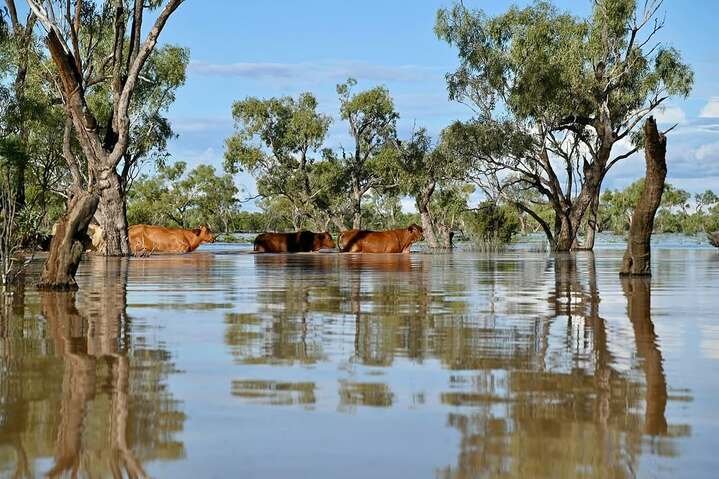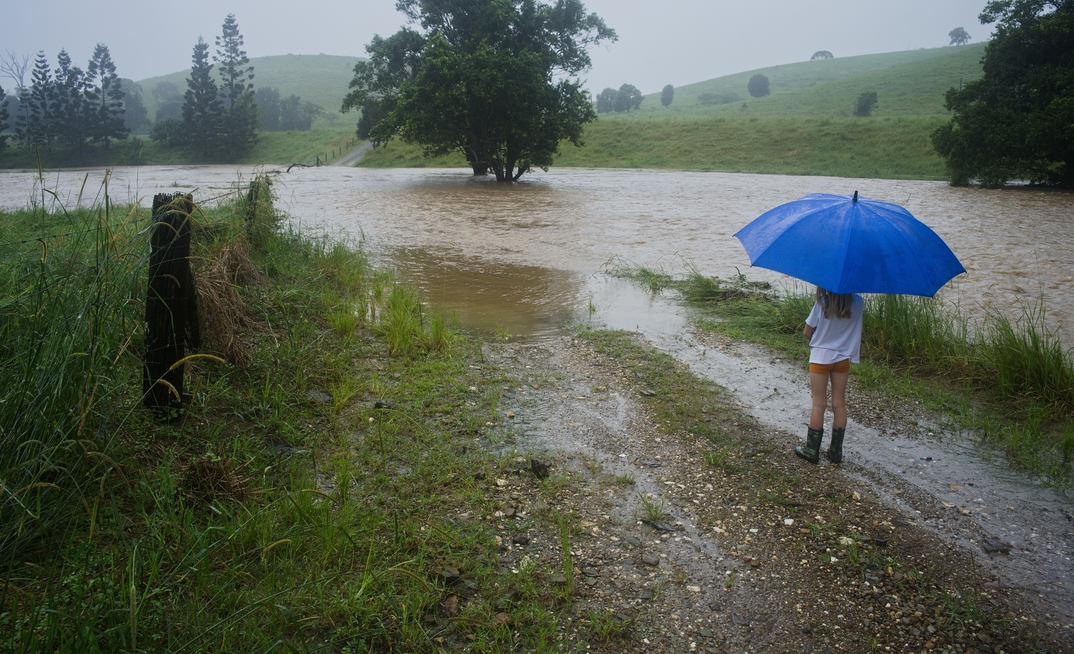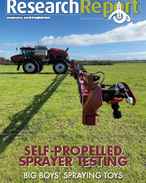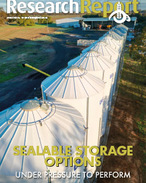MUCH of central and southern Queensland is suffering the impacts of devastating floods which have resulted in huge stock and infrastructure losses.
An area larger than the state of Victoria is underwater following massive rainfall events and the Bureau of Meteorology (BOM) has forecast more rain this week as the remnants of Tropical Cyclone Dianne flow into western and southern Queensland.
Current estimates put stock losses at more than 140,000 head as there simply is no higher ground available for sheep and cattle to escape to.
There are major flood warnings for areas that stretch from the Northern Territory/Queensland border, through to central and southern Queensland and into northern New South Wales.
YOU MIGHT ALSO LIKE
Rural Aid said yesterday the impact on agriculture has been immense, compounding the already difficult conditions caused by ongoing droughts.
"This disaster has left farmers across these affected regions in urgent need of support to recover from the extensive damage and ensure the survival of their remaining livestock," it said.
In collaboration with the Queensland Government, Rural Aid is delivering critical relief to affected farmers, ensuring that resources and aid are being directed to the most impacted areas.
"A key initiative has been the airlifting of bales of hay by helicopter to farmers who have been cut off by the floods," Rural Aid said.
"These airlifts provide essential sustenance for stranded livestock, which is a lifeline for farmers unable to transport feed due to the devastating conditions."
Beyond immediate food relief for livestock, Rural Aid is also addressing the financial strain by issuing prepaid Visa cards to farmers and providing them with direct financial assistance to help them cope with the economic challenges they are facing.
600MM FALLS IN SOME AREAS WITH MORE TO COME
The Bureau of Meteorology (BOM) reported yesterday 200 to 500 millimetres of rain was recorded across large areas of western Queensland last week- exceeding the annual average in some areas. Its Sunbury gauge recorded the highest rainfall at 600mm for the week (ending 31 March), which included 347mm in just 24 hours. BOM added 50 to 200mm of rainfall was recorded across most of the rest of Queensland, the north of the Northern Territory and in northern NSW for the week.
BOM Meteorologist, Dean Narramore, said yesterday major flooding continues to impact much of western and southern inland Queensland and more rainfall is on the way.
He said there is expected to be widespread moderate to heavy rainfall across much of Queensland and into north-east NSW, which he added is concerning given the current major flood warning across the state. There is already major flooding around Longreach, Thargomindah, Cunnamulla, Quilpie and "everywhere in between", so Narramore said the additional rainfall predicted for last night and over the coming days could see flash and riverine flooding occur.
Another 50 to 100mm is also on the forecast over the coming days for parts of central and eastern Australia, and particularly through much of inland Queensland, with falls over 100mm possible through northern areas, inland parts of south-east Queensland and far north-east NSW.
A LONG ROAD TO RECOVERY

Rural Aid CEO, John Warlters, is currently in Charleville coordinating relief efforts.
"The flooding in Queensland has created an incredibly challenging situation for farmers," he said.
"We're doing everything we can to provide immediate support and ensure farmers have the resources they need to care for their livestock.
"The scale of this disaster is overwhelming, but with the ongoing generosity of the public, we can make a real difference for those impacted."
Warlters said he's witnessed the strength and resilience of the farmers in the area, adding the road to recovery will be long.
"Rural Aid is committed to supporting these communities every step of the way," he said.
Rural Aid said donations will play a crucial role in providing ongoing support to farmers, helping them recover and rebuild in the wake of this disaster. Donate via the Rural Aid website.
BROADER IMPACTS
National Rural Health Alliance (NRHA) chief executive, Susi Tegen, said the impacts of the flooding extend well beyond rural areas, affecting the broader Australian population through the spread of illness and rising costs of food, goods and services.
"The disruption of production and services in terms of agriculture, small businesses and tourism in rural areas cause ripple effects on the economy, creating further stress on all Australians who currently face cost-of-living pressures," Tegen said.
NRHA highlighted the numerous health challenges posed by floods, including food insecurity, poor air quality, increased mosquito and black flies with ensuring disease spread, limited access to essential medications, respiratory illnesses caused by mould, as well as water and air-borne diseases. Providing food and treatment for livestock becomes more difficult, compounding the problems for rural families.
"Recovery efforts must take a multi-faceted approach, addressing not only the physical damage but also the mental and emotional distress caused by the loss of homes, property, livestock, and pets," Tegen said.
The Invasive Species Council has raised concerns about red imported fire ants spreading among the flood waters.
HELP FOR PRODUCERS
Help is available to producers impacted by floods and heavy rainfall in Western Queensland, North Queensland floors and/or Ex-Tropical Cyclone Afred.
HEALTH AND WELLBEING SUPPORT
To talk to someone, you can call any of the following hotlines:
Lifeline on 13 11 14
Beyond Blue on 1300 224 636
Rural Aid Counselling Intake Line on 1300 175 594
Social workers can also provide support. Click here for more information.
The Disaster Health Care Assistance Scheme can help with out of pocket health costs due to natural disasters. It's delivered by Services Australia, with more information available here.
EMERGENCY FODDER
Click here to request Rural Aid fodder support of contact your local council.
MAN (OR WOMAN) POWER
Requests for assistance can be made via Rural Aid's Farm Army initiative, with volunteers having provided invaluable support to farmers and rural communities impact by natural disasters in the past. For more information click here.
FINANCIAL SUPPORT
Disaster loans are available for primary producers and small businesses in certain shires. Go to the Queensland Rural and Industry Development Authority (QRIDA) website or call 1800 623 946 for more information.
The Queensland Government also offers:
- Personal Hardship Assistance for those in eligible areas. Apply at qld.gov.au/disasterhelp or by phoning 1800 173 349.
- Freight subsidies of up to $5,000 per property to move essential materials such as fodder, building and fencing materials, machinery, and animals for restocking
- Essential Working Capital Loans of up to $100,000.
A lump sum is available via the Australian Government Disaster Recovery Payment to help people affected by Western Queensland heavy rain and flooding, those directly impacted by Ex-Tropical Cyclone Afred and/or affected by North Queensland floods. More information is available on the Services Australia website.
Rural Aid financial assistance is available here or by calling 1300 327 624.
The Money Smart website provides advice on recovering from a natural disaster.
And anyone running into issues when trying to claim insurance can get free legal advice and support from Legal Aid:
Queensland— Natural Disaster Legal Help (1300 527 700)
NSW — Disaster Response Legal Service (1800 801 529).
OTHER SUPPORT
St Vincent de Paul QLD, provides Disaster Recovery Support. Call 1800 846 643 or complete an online enquiry form here.
The Community Recovery Hotline (1800 173 349) is open 24 hours a day, 7 days a week, and can help you to apply for financial assistance and connect you to appropriate support and emotional services.
To find more information about other services Rural Aid offers go to its website here.
Other charities offering tailored support for farmers including the Farm Angels and Aussie Helpers.
Other advice can be sought by calling QLD Agriculture on 13 25 23.
























